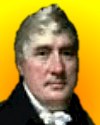
On 4 Oct 1821, John Rennie died, the Scottish engineer and architect whose major contributions to the design of canals, bridges, harbours, docks and lighthouses throughout Britain was recognized by his burial in St. Paul's Cathedral.
One of his finest works, the Waterloo Bridge across the Thames River in London was under construction at the time of his death, and completed by his son, Sir John Rennie.
A chapter on John Rennie in Biographical Illustrations of St. Paul’s Cathedral (1843) provides more information on his life work.

Also, on 4 Oct 1906, Alice Stewart was born, an English epidemiologist who is well-deserving of your attention. Today's book pick is: The Woman Who Knew Too Much: Alice Stewart and the Secrets of Radiation, by Gayle Greene who presents a significant biography. Stewart researched and doggedly insisted there was greater danger from X-rays and nuclear radiation than was at the time accepted by nuclear and health physics establishments. She revolutionized the concept of radiation risk in the 1950s with her discovery that fetal X rays double a child's risk of developing cancer. Two decades later, when she was in her seventies, she again astounded the scientific world with a study showing that the U.S. nuclear weapons industry was about twenty times more dangerous than safety regulations permit. She had the courage and integrity to do battle with the slings and arrows of the federal scientific pygmies who attacked her work. All seven Amazon customer reviews are for 5 stars (as of Oct 2013).
It is available from Amazon, typically about New from $24.88. Used from $1.55. (As of earlier time of writing - subject to change.)

On 4 Oct 1957, the Soviet launch of Sputnik set off the Space Race which changed the course of American history, with related impact on the U.S. educational system. Today's book pick is: Sputnik: The Shock of the Century (Science Matters), by Paul Dickson, who pieces together the complex series of events leading up to the launch of Sputnik and the changes it caused in scientific and social history.
It is available from Amazon, typically about New from $14.95. Used from $3.49. (As of earlier time of writing - subject to change.)
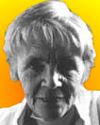 | In the old days, they killed the messenger who brought the bad news... a Cassandra is never popular in her time. |
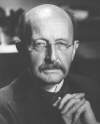 | Experimenters are the shock troops of science. |
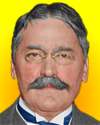 | We would never get away from it. ... It’s bad enough as it is, but with the wireless telephone one could be called up at the opera, in church, in our beds. Where could one be free from interruption? [Prediction about the cell phone made over a century ago.] |
| Before you look at today's web page, see if you can answer some of these questions about the events that happened on this day. Some of the names are very familiar. Others will likely stump you. Tickle your curiosity with these questions, then check your answers on today's web page. | |
| Births | |
 | Michael Idvorsky Pupin, born 4 Oct 1858, was a Serbian-American physicist who devised an improvement for telephone communication. Pupin also won a Pulitzer Prize (1924) for his autobiographical work, From Immigrant to Inventor (1923). What was his contribution to telephone communication? |
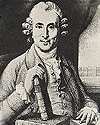 | On 4 Oct 1716, James Lind was born, a Scottish physician remembered as the “founder of naval hygiene in England,” for his investigations on the sickness of sailors. What significant change to the diet of sailors did he implement, and why? |
| Deaths | |
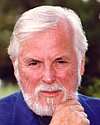 | Edward H. Lowe (1920-1995) was an American inventor. After his WW II Navy duty, Lowe joined his father's company in Cassopolis, Mich., selling industrial absorbents, including sawdust and an absorbent clay called Fuller's Earth. What household invention did he produce, and under what name? |
| Events | |
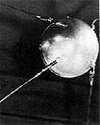 | On 4 Oct 1957, the Space Age began as the Soviet Union, to the dismay of the United States, launched Sputnik, the first manmade satellite, into orbit around the earth. The craft circled the earth every 95 minutes at almost 2,000 miles per hour 500 miles above the Earth For how long did Sputnik continue to transmit its beep-beep radio signal? |
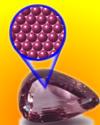 | On 4 Oct 1971, a new unit for chemical measurement of the amount of substance (matter) was added to the six base quantities of the SI (International System of scientific units.) The decision was made by the Conférence Général des Poids et Mesures (CGPM), the principal executive organization under the Treaty of the Meter. This new unit has what name and symbol? |
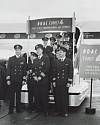 | On 4 Oct of a certain year, the first trans-Atlantic passenger jetliner service was begun by British Overseas Airways Corporation (BOAC) with flights between London and New York. In which decade did BOAC jetliner service begin? |
Fast answers for the previous newsletter for October 3: to treat malaria patients with fever, for, he reasoned, people living in cold climates never got malaria • Nature • sewing machine • Morris Mini-Minor (“Mini”) • Mount Palomar Observatory • insecticide.
 If you enjoy this newsletter, the website, or wish to offer encouragement or ideas, please send feedback by using your mail reader Reply button.
If you enjoy this newsletter, the website, or wish to offer encouragement or ideas, please send feedback by using your mail reader Reply button. Your click on a Facebook, StumbleUpon, or other social button on the site webpages is also a welcome sign of appreciation. Thank you for using them.
© This newsletter is copyright 2020 by todayinsci.com. Please respect the Webmaster's wishes and do not put copies online of the Newsletter — or any Today in Science History webpage. (If you already have done so, please remove them. Thank you.) Offline use in education is encouraged such as a printout on a bulletin board, or projected for classroom viewing. Online, descriptive links to our pages are welcomed, as these will provide a reader with the most recent revisions, additions and/or corrections of a webpage. For any other copyright questions, please contact the Webmaster by using your mail reader Reply button.
--
If you do not want to receive any more newsletters, Unsubscribe
To update your preferences and to unsubscribe visit this link
Executive Real Estate Business Class
-
"It was like a man with wings. It wasn't like anything you'd see on TV or in a monster movie." ...
About the publisher
Search This Blog
Blog Archive
-
▼
2020
(1542)
-
▼
October
(171)
- The Compass: Iceland
- A Very Special Halloween Edition Of Our Scariest S...
- On This Day for October 31 - Luther's Ninety-five ...
- Newsletter for Saturday 31 October.
- CORONAVIRUS UPDATE: Why some people are supersprea...
- October 31: Martin Luther Challenges the Pope, Mic...
- PHOTOGRAPHY: Capturing America's pent-up energy to...
- The Terrifying Story Of The Mothman, The Little-Kn...
- The Roundup Top Ten from History News Network
- On This Day for October 30 - Henry Tudor crowned k...
- Newsletter for Friday 30 October.
- October 30: Tsar Nicholas II 'October Manifesto', ...
- ANIMALS: Will oil drilling spread across spectacul...
- On This Day for October 29 - Collapse of U.S. stoc...
- Newsletter for Thursday 29 October.
- October 29: End of China's One-Child Policy and Lo...
- YOUR WEEKLY ESCAPE: The science of the heebie-jeebies
- SCIENCE: Will every hurricane season be like this?
- The Latest News from History News Network
- On This Day for October 28 - Statue of Liberty ded...
- Newsletter for Wednesday 28 October.
- October 28: Fingerprints, Prohibition and the Blac...
- TRAVEL: When do Americans say they’ll fly again?
- Were vampire hunters real? Subscribe to find out.
- On This Day for October 27 - Anwar Sadat and Menac...
- Newsletter for Tuesday 27 October.
- October 27: China's Population Reaches 1 Billion a...
- HISTORY: Rush of early voters spurs talk of a record
- New This Week on History News Network
- On This Day for October 26 - Park Chung Hee assass...
- Newsletter for Monday 26 October.
- October 26: Beginning of the Red Cross and the Gun...
- FAMILY: When the best advice to your kids isn't yours
- On This Day for October 25 - English triumph at Ag...
- Newsletter for Sunday 25 October.
- October 25: The Great United Nations China Switch ...
- The Compass: Japan
- On This Day for October 24 - United Nations establ...
- Newsletter for Saturday 24 October.
- October 24: Two Great Historical Stock Market Crashes
- CORONAVIRUS UPDATE: How to fight the COVID-19 'inf...
- PHOTOGRAPHY: The best photojournalism of the decade
- What did Cleopatra look like? | Charles and Diana’...
- 11 Spooky Urban Legends Based On Terrifying True S...
- The Roundup Top Ten for October 23, 2020
- On This Day for October 23 - U.S. and French troop...
- Newsletter for Friday 23 October.
- October 23: US National Debt, an Old Fossil and th...
- ANIMALS: They were researching cheetahs. Iran call...
- Love the show Weird But True? Get more WBT with ev...
- Early Holiday Savings at the HISTORY Store
- Introducing the Britannica All New Kids' Encyclope...
- On This Day for October 22 - Cuban missile crisis,...
- Newsletter for Thursday 22 October.
- YOUR WEEKLY ESCAPE: These prehistoric footprints t...
- October 22: Greenwich Mean Time, the Cuban Missile...
- SCIENCE: Will the next generation fight a pandemic...
- On This Day for October 21 - Magellan's discovery ...
- The Latest News from History News Network
- October 21: Battle of Trafalgar, China Occupies Ti...
- TRAVEL: We found 50 stories in 50 states for ‘Amer...
- On This Day for October 20 - Opening of Sydney Ope...
- Newsletter for Tuesday 20 October.
- October 20: On This Day in History
- HISTORY: Why do we have the Electoral College?
- Join photographer Pete Muller for an online conver...
- New This Week on History News Network
- On This Day for October 19 - Surrender of Lord Cor...
- Newsletter for Monday 19 October.
- October 19: On This Day in History
- FAMILY: Letting kids take charge
- The lost heirs of Henry VIII
- On This Day for October 18 - Alaska Purchase appro...
- Newsletter for Sunday 18 October.
- October 18: French Protestants, The Alaska Purchas...
- The Compass: Portugal
- On This Day for October 17 - Mother Teresa awarded...
- Newsletter for Saturday 17 October.
- October 17: Burma Railway, OPEC Oil Embargo and Ra...
- CORONAVIRUS UPDATE: Who will be first in line for ...
- PHOTOGRAPHY: How COVID-19 changed our work
- The 25 Best Horror Movies Of All Time — And The Ch...
- This Week's Roundup Top Ten from History News Network
- On This Day for October 16 - Marie-Antoinette guil...
- Newsletter for Friday 16 October.
- October 16: Battle of Leipzig, Mao's Long March an...
- ANIMALS: The wildlife photo of the year
- Challenge grant: Help unlock important funds for w...
- On This Day for October 15 - Final conference on A...
- Newsletter for Thursday 15 October.
- October 15: Napoleon's Exile, the 1st Oral Contrac...
- YOUR WEEKLY ESCAPE: A murder mystery 430,000 years...
- SCIENCE: Will the next generation fight a pandemic...
- The Latest News on History News Network
- On This Day for October 14 - Battle of Hastings, D...
- Newsletter for Wednesday 14 October.
- Historic Trends in our time may be overcome with g...
- October 14: William the Conqueror, Robert the Bruc...
- The Embarrassing Final Moments Of 10 Revered Histo...
- TRAVEL: Does your wine taste like fire?
-
▼
October
(171)
-
Blogroll
-
About
HistoryFact










0 comments:
Post a Comment